I use nloptr to model a non linear optimization problem using R.Net . I pass initial values of the parameters to the Rscript where I define lb and ubto the variables.
lb for all the variables is 0 whereas ubis "1" for some & "Inf" for some variables.
When I run the model, I am continuously getting an error as
Additional information: Error in is.nloptr(ret) : at least one element in x0 > ub
Interestingly if I provide the same initial input data from EXCEL to "R.Script", it runs fine and I never get error about x0>ub.
Any insights on how to debug this or know what might be wrong? I can'f fathom why it would work with excel but not with C#.
Some details are below: Example: Parameters are in the form of Matrix as below (called my.data.var)
The constraints are such that sum of the second col and third col should be <=1 respectively. i.e,

The lb for all parameters is 0 and i define it as:
lb = vector("numeric",length= length(my.data.var))
ub as:
ub.matrix <- matrix(,nrow = 2, ncol=4)
ub.matrix
for(rownum in 1:2)
{
ub.matrix[rownum,1] = Inf
ub.matrix[rownum,4] = Inf
for(colnum in 2:3)
{
ub.matrix[rownum,colnum] = 1
}
}
The constraint func is defined as:
constraint.func <- function(my.data.var)
{
column = 1
constr <- vector("numeric",length = 2)
my.data.var.mat <- matrix(my.data.var,nrow = 2,ncol = 4,byrow = TRUE)
for(index in 2:3)
{
sum.constraint = 0
for(prodwells in 1:2)
{
sum.constraint <- sum.constraint + my.data.var.mat[prodwells,index]
}
constr[column] <- sum.constraint - 1
column = column+1
}
return(constr)
}
result <- nloptr(my.data.var,eval_f = Error.func, lb=lb,
ub = ub,eval_g_ineq=constraint.func,
opts = opts)
When I run the script, I noticed that "sum" of the first col is >1 and hence the error!
